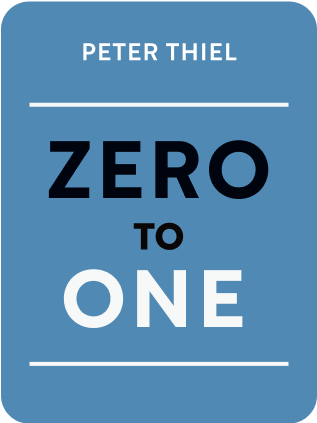

This article is an excerpt from the Shortform summary of "Zero To One" by Peter Thiel. Shortform has the world's best summaries of books you should be reading.
Like this article? Sign up for a free trial here .
What is a green technology company, and why do we need them? Does green tech really work as a business?
A green technology company aims to create tech that is eco friendly. Tesla, a famous green technology company, has succeeded in this endeavor; but many others have failed. Read about what a green technology company is, and how the future of green tech (also called cleantech) could work.
Making a Green Technology Company Work
The start of the 21st century was marked by a boom in clean technology, spurred by several high-profile environmental disasters: smog in Beijing that was so bad people couldn’t see or breathe, arsenic polluting the water in Bangladesh, and blockbuster hurricanes in the U.S (Ivan and Katrina) prompting worries about future effects of global warming. Many green tech companies launched in response. But what is green tech?
Entrepreneurs launched thousands of green technology companies and investors kicked in more than $50 billion. However, the rush to found a green technology company created a bubble. Most green tech companies failed—Solyndra was one of the most notorious. When the maker of solar panels collapsed it left taxpayers on the hook for over $500 million. Over 40 solar companies folded or filed for bankruptcy in 2012.
Conservatives blamed the crash on government involvement. In reality, most green technology companies crashed because they failed to adequately address the seven questions crucial for new companies:
- Engineering: Is your technology a significant advance or only incremental improvement?
- Timing: Is this the right time to sell this technology?
- Monopoly: Are you targeting a big share of a small market?
- People: Do you have the right people on your team?
- Distribution: Do you have a plan to sell your product?
- Durability: Will you dominate your market in the next 10 to 20 years?
- Secret: Have you identified a unique opportunity overlooked by everyone else?
As previously explained, a startup won’t succeed without a business plan that addresses each question. If your answers are weak, your company will fail—however, with a solid answer for each, you’ll be on your way to having a great business.
As examples of how not to run your business, here’s a look at a green technology company’s responses to each question. This can help you answer the questions, What is green tech, and how does it work?
- Engineering: As previously noted, a great company should have proprietary technology that far exceeds that of the nearest rival. green tech companies rarely offered improvements two times better, let alone 10 times better. In Solyndra’s case, its product was worse: the company’s cylindrical solar cells didn’t work as well as flat ones. Companies must aim for 10 times better improvement because incremental improvements often are invisible to the user. Your superiority is clear only when your improvement is 10 times better.
- Timing: Entrepreneurs believed green tech’s time had come. In pitching the government and investors, they compared green tech advances to microprocessor advances; however, solar cell efficiency improvements were much slower than microprocessor improvements, which had improved exponentially since 1970. In comparison, solar cell efficiency only improved from 6% to 25% efficiency in 50 years.
- Monopoly: The huge energy market was ruthlessly competitive. Because the trillion-dollar market was so huge, many companies thought they could get a piece of it, that there was room for everyone. But many had similar technology and failed to stand out, especially in a global market.
- People: Many cleantech companies that failed lack technical talent; they were run by non-tech teams of salesmen and executives who could raise capital and government subsidies, but who lacked the expertise to develop and sell outstanding products.
- Distribution: Cleantech companies lobbied investors and government but failed to plan how to sell and deliver their products. An example was the Israeli electric vehicle company Better Place. It had decent technology—a swappable battery—but made its cars too hard for customers to buy. Customers had to jump through many hoops, including proving they lived near a battery swapping station, promising to follow certain routes, and signing up for a fueling subscription. The company only sold 1,000 cars before filing for bankruptcy.
- Durability: As noted previously, an entrepreneur should aim to be the last mover in her market, which requires asking what the market and the company will be like in 10 and 20 years. Most cleantech companies had no answer and ended up blaming China for their failures. However, they could have predicted that China would act to give its manufacturers an edge and planned for it. Besides not anticipating competition, cleantech made bad assumptions about the energy market as a whole. They didn’t foresee the fracking boom, which knocked down fossil fuel prices and blew up most renewable energy business models.
- Secret: The belief that solar energy had huge potential had become conventional wisdom in the early 2000s. Cleantech and government officials alike embraced solar. But great companies aren’t built on convention but on secrets: truths that others don’t see.
The Social Entrepreneurship Myth
Cleantech entrepreneurs weren’t just seeking business success, they wanted to be “social entrepreneurs.” The idea of social entrepreneurship is to combine the best aspects of entrepreneurship with the best of nonprofits (ability to make money and serve the public interest) and “do well by doing good.”
When there’s a consensus that something is good, it’s conventional, like the idea of green energy to start with. The problem is all nonprofits pursue the same priorities (the same way for-profit companies copy each other). Cleantech produced numerous indistinguishable products under the umbrella of green energy, an overly broad goal.
A better way to do something good for society is to do something different. The best products are the ones no one else has thought of.
A Green Tech Success: Tesla
Tesla is one of the few examples of a green technology company that lasted because it had good answers for the seven entrepreneurial questions, as well as answering what is green tech:
- Technology: Tesla’s technology is superior, but what made Tesla really stand out was its ability to integrate many components into one great product, the (2013) Tesla Model S sedan.
- Timing: CEO Elon Musk seized the opportunity to secure a half-billion-dollar loan from the government in the small window before the government pulled the plug on cleantech subsidies.
- Monopoly: Tesla started with a tiny submarket it could dominate: high-end electric sports cars. It then moved into the luxury electric sedan market and is positioned to continue expanding into broader markets.
- Team: Musk assembled a team good at both engineering and sales.
- Distribution: Tesla decided to own the distribution chain. It sells and services its cars in its own stores. The cost is higher than for traditional dealership distribution, but the approach gives it control over the customer experience, strengthens its brand, and saves money in the long run.
- Durability: By getting a head start, moving faster than anyone else, and establishing a strong brand, Tesla is set to extend its lead in the future.
- Secrets: Tesla realized that while rich people wanted to look green by buying an electric car, they’d rather look green and cool at the same time—if he gave them the opportunity, they’d choose his sleek car over the boxy Prius. Tesla created a product based on the secret that cleantech was in large part a social phenomenon.
Green Technology 2.0
Tesla’s success proves cleantech can work. It’s based on a valid need for cleaner sources of energy, which is a resource we can’t live without. Energy is necessary for food production, shelter, and making things that enable us to live comfortably.
Most of the world aspires to live as Americans do, which means a growing demand for energy will create conflict and environmental challenges unless we develop new technology. The world doesn’t have enough energy resources for everyone to adopt past approaches, and don’t offer viable green technology solutions
Cleantech spurred optimism about the future of energy. But cleantech entrepreneurs failed to translate a macro idea of green energy into concrete micro business plans.
This followed the pattern of the tech bubble, where many companies pursued the same idea without offering superior green technology solutions for a specific problem. However, technology made a comeback (Web 2.0) since the dot-com crash and dramatically changed publishing, retail sales, and social life today. Cleantech could too: There’s still an overarching need for green technology solutions. A company that finds a specific niche and dominates a small market could reap big rewards. Although energy is a big problem, entrepreneurs who create Energy 2.0 will have to start small.
A green technology company should strive for business success over social entrepreneurship. If you’re interested in forming a green technology company, do you research and make a strong business plan.

———End of Preview———
Like what you just read? Read the rest of the world's best summary of Peter Thiel's "Zero To One" at Shortform .
Here's what you'll find in our full Zero To One summary :
- Why some companies genuinely move the world forward when most don't
- How to build a company that becomes a monopoly (and why monopolies aren't bad)
- Silicon Valley secrets to selling products and building rockstar teams






